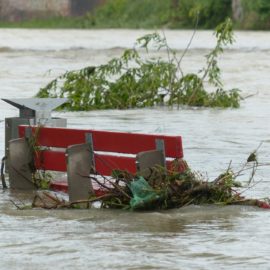
We have had rain and the ground shows it. But what about our water supply which the rain should be helping? Just look at all the low pressure warnings we get which make you wonder. Sadly we are not alone.
Spurred by recent hurricanes and a rare winter storm that demonstrated the frailty of Louisiana’s public water supply, lawmakers have set their attention on improving the state’s troubled water systems. Legislators created a new grading metric for community water systems, steered $300 million in federal coronavirus aid to improvements and allocated millions more in state cash to upgrades and fixes in their recently ended session. Gov. John Bel Edwards supported the efforts. Louisiana has nearly 1,300 water systems statewide. About half are operating off structures that are more than 50 years old, according to reports documenting their vulnerabilities. In some rural areas, systems are teetering on the brink of failure and face such significant population loss they don’t have enough money for proper maintenance. “If we fix everybody and everything that should be fixed, it’s about $4 billion in estimated costs,” Desiree Honoré Thomas, with the Democratic governor’s Division of Administration, told lawmakers.
theadvocate.com
$4 Billion is a lot but it might be underestimated. The EPA, in 2018, estimated Louisiana needs were in excess of $7 billion and that was 4 years ago so the price is higher.
“We now have what we believe are the resources to make a meaningful impact and change on these systems,” said House Appropriations Chairman Jerome “Zee” Zeringue, a Houma Republican. Zeringue is co-chairing a 10-member legislative Water Sector Commission created to decide which community water and sewer systems should share in the $300 million in federal pandemic aid. The Edwards administration, which will run the application portal and handle the grants, told the commission it intends to submit recommendations for prioritizing projects by mid-July with an eye toward opening the application period Aug. 1. The need to harden water infrastructure is an obvious, bipartisan issue.
Hurricane Laura knocked out 121 water systems leaving many without potable water. Another 150 systems required boiling water for safety. The February winter storm that left ice and snow over parts of Louisiana again meant more boil water decrees.
William Daniel, director of Shreveport’s water and sewerage system, believes even the multibillion-dollar estimates of the problem are understated. He told lawmakers the city of Shreveport, which suffered a week of water outages in February, probably has $2 billion in needs alone. Amanda Ames, chief engineer for the Louisiana Department of Health, told the Water Sector Commission her agency already had identified 182 drinking water systems statewide that have $146 million in projects deemed “critical.” Lawmakers also intend to make the lists of the state’s most fragile water systems more widely known — and the problems more understandable — to the public through a new grading system. The bill creating the grading, pushed by St. Martin Parish Republican Sen. Fred Mills, won unanimous legislative support and has been signed into law. It will require the Department of Health to develop a grading system from A through F, similar to the way the education department grades public schools.
A to F, where do we lie? The problem with releasing data is that often it is highly technical and hard to read.
When someone can see an F-rated system, “it causes the public to say, ‘Why do I have to live under this type of water system?’” Mills told lawmakers. Water systems will be judged on their water quality violations, financial sustainability, customer satisfaction and other benchmarks. The health department will have to publish the grades online. Any community water system that receives a D or F could be subject to corrective measures and will have to submit improvement plans. Mills hopes communities that get water from poorly rated systems might have discussions ab out consolidating with better rated systems. While Louisiana has nearly 1,300 water systems, he noted Alabama has about 400. Some water system leaders spend money on unrelated projects, while others don’t want to suggest needed price hikes for consumers because they don’t want to hurt themselves politically, Mills said. “I think by having this score carding system, it’s going to glaringly bring out weaknesses that some water systems just don’t want to face,” he told his colleagues.
The score cards are not to be issued unto 2023 but they could come sooner as the money is released as that will be on a need basis. It will be interesting to see our score.



